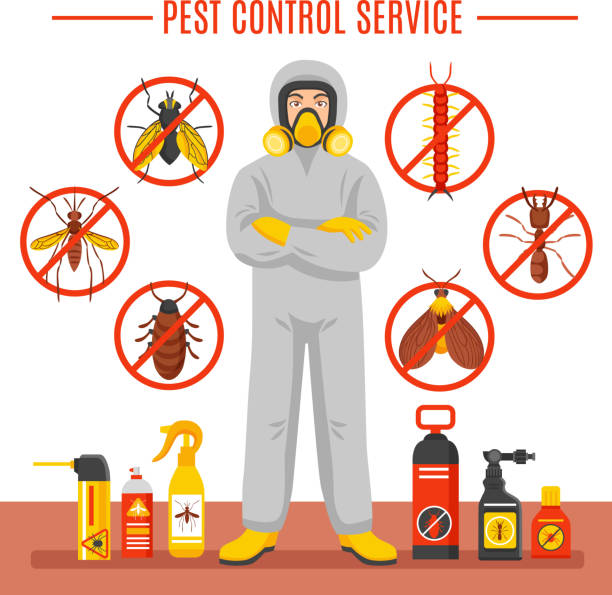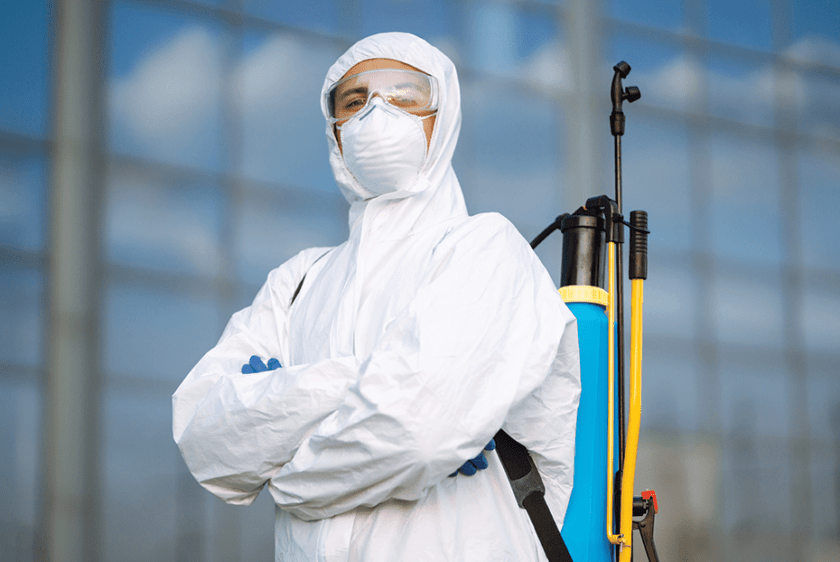Stop infestations before they spread with Pest Control treatments today.
Eco-Friendly Bug Control Approaches for Handling Wildlife in Urban Areas
Urban areas usually find themselves at the intersection of human task and wildlife, bring about one-of-a-kind challenges in bug monitoring. Environment-friendly strategies emphasize lasting coexistence, utilizing strategies such as environment alteration and natural repellents to mitigate human-wildlife conflicts. These methods not just shield the setting yet also enhance community engagement in wildlife management. As urban populations remain to grow, understanding the dynamics of wildlife communications comes to be increasingly essential. What innovative approaches can be executed to guarantee both ecological balance and city security? Exploring this concern reveals a compelling landscape of possible options.
Understanding Urban Wild Animals Characteristics
Understanding Urban Wild animals Characteristics is crucial for creating reliable and environmentally friendly insect control strategies. Urban areas are increasingly becoming habitats for different wildlife types, driven by elements such as environment fragmentation, food availability, and human infringement. Acknowledging these characteristics enables a nuanced method to pest monitoring that lines up with eco-friendly principles.
Urban wildlife frequently consists of species such as raccoons, squirrels, and birds, which adjust to city atmospheres, finding specific niches in green areas, parks, and also suburbs. Their presence can bring about conflicts with people, specifically when they exploit human sources for food and sanctuary. Understanding the actions and environmental duties of these species notifies strategies that minimize negative interactions while promoting biodiversity.
In addition, acknowledging the interdependencies within urban ecological communities aids in identifying essential areas for habitat preservation and restoration. This understanding adds to the growth of incorporated parasite monitoring (IPM) techniques that think about the environmental balance, thus decreasing reliance on harmful chemicals. By fostering coexistence between humans and urban wild animals, cities can produce much healthier settings that profit both homeowners and neighborhood ecological communities, leading the way for lasting city living.
All-natural Repellents and Deterrents
All-natural repellents and deterrents use a sustainable choice to standard pest control methods by harnessing the power of nature to keep undesirable types at bay. These eco-friendly solutions generally utilize plant-based ingredients, essential oils, and various other normally taking place materials that deter parasites without damaging the atmosphere.
One efficient natural repellent is peppermint oil, which is known to fend off rats and bugs. Its strong aroma is undesirable to many pests, making it a popular selection for urban setups. Likewise, vinegar and citrus peels can work as deterrents, as their solid smells are usually unappealing to various wildlife.
Additionally, diatomaceous planet is a natural powder that can be spread in locations vulnerable to pest task, effectively drying out and discouraging bugs without presenting dangers to non-target types. Furthermore, garlic sprays and neem oil are identified for their capability to repel a large range of parasites, including both insects and bigger wildlife.
Executing these all-natural repellents not only decreases dependence on chemical pesticides but likewise advertises a much healthier urban community, promoting an extra balanced coexistence between humans and wildlife. By utilizing these methods, metropolitan locations can effectively manage parasite populaces while lessening ecological impact.
Habitat Alteration Techniques
Effective environment alteration strategies play a vital role in sustainable bug monitoring by modifying the setting to make it less helpful to pest problems. By recognizing the eco-friendly characteristics of metropolitan areas, homeowner can carry out calculated adjustments that discourage pests while promoting biodiversity.
(Fire ant control Port Charlotte)One key strategy entails maintaining appropriate sanitation. This consists of normal waste removal, securing trash can, and removing standing water to reduce breeding websites for insects and rats. In addition, landscape design techniques such as choosing indigenous plants can improve environmental equilibrium, giving environments for beneficial microorganisms while minimizing sources for bugs.
One more essential strategy is to secure entry factors in buildings. Checking and repairing splits in structures, wall surfaces, and windows can substantially decrease parasite access. Additionally, creating physical barriers, such as fencings or plant buffers, can prevent wildlife activity into human-inhabited areas.
Integrated Parasite Management Practices
Building upon environment alteration methods, integrated pest monitoring (IPM) practices supply an alternative approach to managing insect populaces while minimizing ecological effect. IPM combines numerous strategies, including biological, cultural, mechanical, and chemical controls, to accomplish efficient bug monitoring.
Biological control entails the introduction of natural predators or parasites to decrease pest populaces. Cultural practices, such as plant rotation and cleanliness, disrupt pest life cycles and decrease their environments - Pest control service. Mechanical controls, like catches and obstacles, give prompt relief from insect stress without chemical treatment
Chemical controls are used as a last option, concentrating on targeted applications that restrict injury to non-target species and the atmosphere. The selection of ecologically pleasant pesticides, when needed, is indispensable to the IPM structure. In addition, keeping track of parasite populaces and evaluating prospective damages aids notify decision-making, making sure that treatments are timely and efficient.
Community Participation and Education And Learning

(Wildlife removal Port Charlotte)Workshops and informative sessions can equip homeowners with understanding concerning indigenous species, environment conservation, and effective non-toxic parasite monitoring methods. Partnership with institutions, regional companies, and government companies additionally improves instructional outreach, making certain that necessary details gets to varied audiences.
Moreover, community-led initiatives, such as neighborhood clean-up days and environment restoration jobs, not only advertise biodiversity however additionally strengthen community connections. Pest control service. By motivating homeowners to share their experiences and observations, communities can create targeted techniques that address certain local insect concerns
Incorporating comments from residents into bug administration plans allows a more receptive and adaptive strategy to wild animals difficulties. Inevitably, notified and involved neighborhoods are key to accomplishing long-term success in green bug control, leading to healthier metropolitan settings that respect Continue both human and ecological needs.

Verdict
To conclude, environment-friendly insect control approaches deal sustainable solutions for taking care of metropolitan wildlife. By prioritizing habitat adjustment, making use of all-natural repellents, and implementing incorporated parasite administration techniques, communities can foster an unified coexistence with neighborhood fauna. Involving homeowners through education and learning improves recognition and encourages responsible wild animals communications. Inevitably, these techniques not only protect biodiversity yet likewise advertise ecological health, making sure city locations remain lively ecosystems where humans and wildlife flourish with each other.